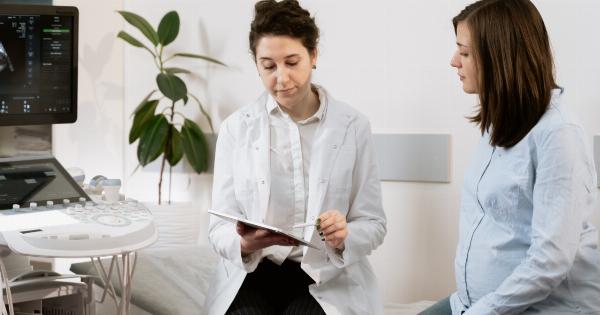When a suspicious area is detected during a mammogram or ultrasound, a biopsy may be recommended to further investigate the abnormality.
A biopsy is a medical procedure in which a small sample of tissue or cells is removed from the body to be examined under a microscope. In the case of breast abnormalities, a common biopsy option is stereotactic biopsy.
What is Stereotactic Biopsy?
Stereotactic biopsy is a minimally invasive procedure that uses mammography or imaging guidance to precisely locate and sample breast abnormalities, such as calcifications, masses, or lumps.
It provides a safe and effective way to obtain tissue samples without the need for open surgery.
How Does Stereotactic Biopsy Work?
During a stereotactic biopsy, the patient lies face down on a specialized biopsy table. The breast is positioned through an opening in the table, allowing the radiologist to accurately target the suspicious area.
Local anesthesia is applied to numb the breast and a small incision is made to insert a biopsy needle. Under imaging guidance, the radiologist carefully advances the needle to the precise location of the abnormality.
Once the needle is in position, a vacuum-assisted device may be used to collect multiple tissue samples. This device uses suction to gently and efficiently remove tissue samples, reducing the number of needle insertions required.
The collected samples are then sent to a pathologist for analysis.
Advantages of Stereotactic Biopsy
Stereotactic biopsy offers several advantages over other biopsy methods:.
1. Minimally Invasive
As a minimally invasive procedure, stereotactic biopsy requires only a small incision and does not involve open surgery. This results in less pain, minimal scarring, and faster recovery compared to surgical biopsies.
2. Precise and Accurate
Using imaging guidance, stereotactic biopsy allows the radiologist to precisely target the abnormality. This ensures accurate sampling and reduces the likelihood of sampling errors or false-negative results.
3. Local Anesthesia
Unlike surgical biopsies that usually require general anesthesia, stereotactic biopsy can be performed under local anesthesia.
This eliminates the risks associated with general anesthesia and allows the patient to remain awake and comfortable during the procedure.
4. Less Downtime
Due to its minimally invasive nature, stereotactic biopsy has a shorter recovery time compared to surgical biopsies. Patients can usually resume their normal activities within a day or two after the procedure.
5. Cost-Effective
Stereotactic biopsy is a cost-effective alternative to surgical biopsies. It avoids the need for operating room time and general anesthesia, resulting in lower medical costs for both the patient and the healthcare system.
Who is a Candidate for Stereotactic Biopsy?
Stereotactic biopsy may be recommended for individuals who have suspicious breast abnormalities that cannot be easily felt or seen on ultrasound. It is especially useful for pinpointing breast calcifications, which may indicate early signs of cancer.
However, not all cases are suitable for stereotactic biopsy. The radiologist will carefully evaluate each individual’s unique circumstances and decide whether this biopsy option is the most appropriate choice.
What to Expect During and After the Procedure?
During the stereotactic biopsy procedure, patients may experience some pressure and discomfort in the breast area. The local anesthesia helps minimize any pain or discomfort.
After the procedure, a small bandage is placed on the incision site, and patients are usually able to leave the clinic shortly thereafter.
It is common to experience mild bruising, tenderness, or swelling in the breast area for a few days following the biopsy. Over-the-counter pain medications can help manage any discomfort.
Most individuals can resume their regular activities the day after the procedure but are advised to avoid strenuous activities or heavy lifting for a short period of time.
The biopsy samples are sent to a pathology laboratory for analysis. The results are typically available within a few days, and the patient’s healthcare provider will discuss the findings and appropriate follow-up steps.
Risks and Complications
Stereotactic biopsy is generally considered a safe procedure. However, as with any medical intervention, there are some potential risks and complications:.
1. Bleeding or Hematoma Formation
There is a small risk of bleeding or hematoma formation at the biopsy site. The risk is generally low and can be further minimized by following post-procedure instructions, such as avoiding blood-thinning medications.
2. Infection
Although rare, there is a small risk of infection at the biopsy site. Proper sterile techniques during the procedure and good post-procedure wound care help minimize this risk.
3. Discomfort and Bruising
Some degree of discomfort, tenderness, and bruising in the breast area is normal after a biopsy. This usually resolves within a few days.
Conclusion
Stereotactic biopsy offers a safe, effective, and minimally invasive option for sampling suspicious breast abnormalities.
Its precise imaging guidance, reduced patient discomfort, shorter recovery time, and cost-effectiveness make it an attractive alternative to surgical biopsies. When a suspicious area is detected in the breast, it is important to discuss biopsy options with a healthcare provider to determine the most suitable approach for further evaluation and diagnosis.






















